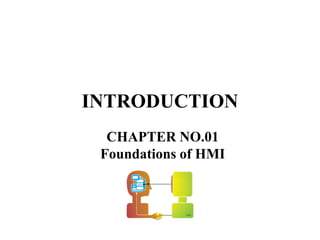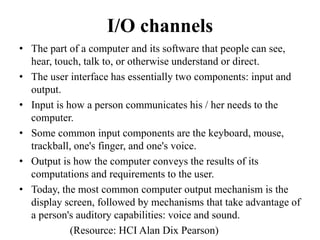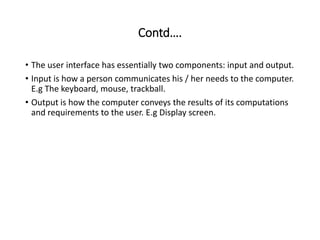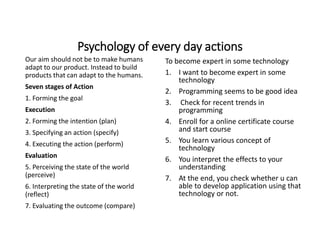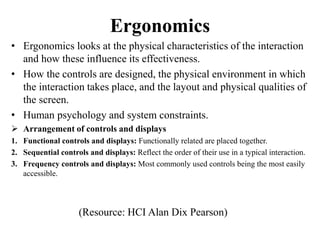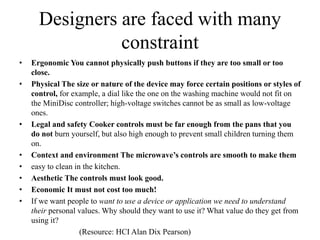The document provides an overview of human-machine interaction and user interface design. It discusses the history and generations of user interfaces from machines that reduced physical labor to today's intelligent machines. The key aspects of user interface design discussed include input/output channels, visual and auditory human perception, hardware and software considerations, and principles of user-centered design like feedback, constraints, and affordances. It also covers reasoning, problem solving, and the psychology of human actions and interactions with devices.
